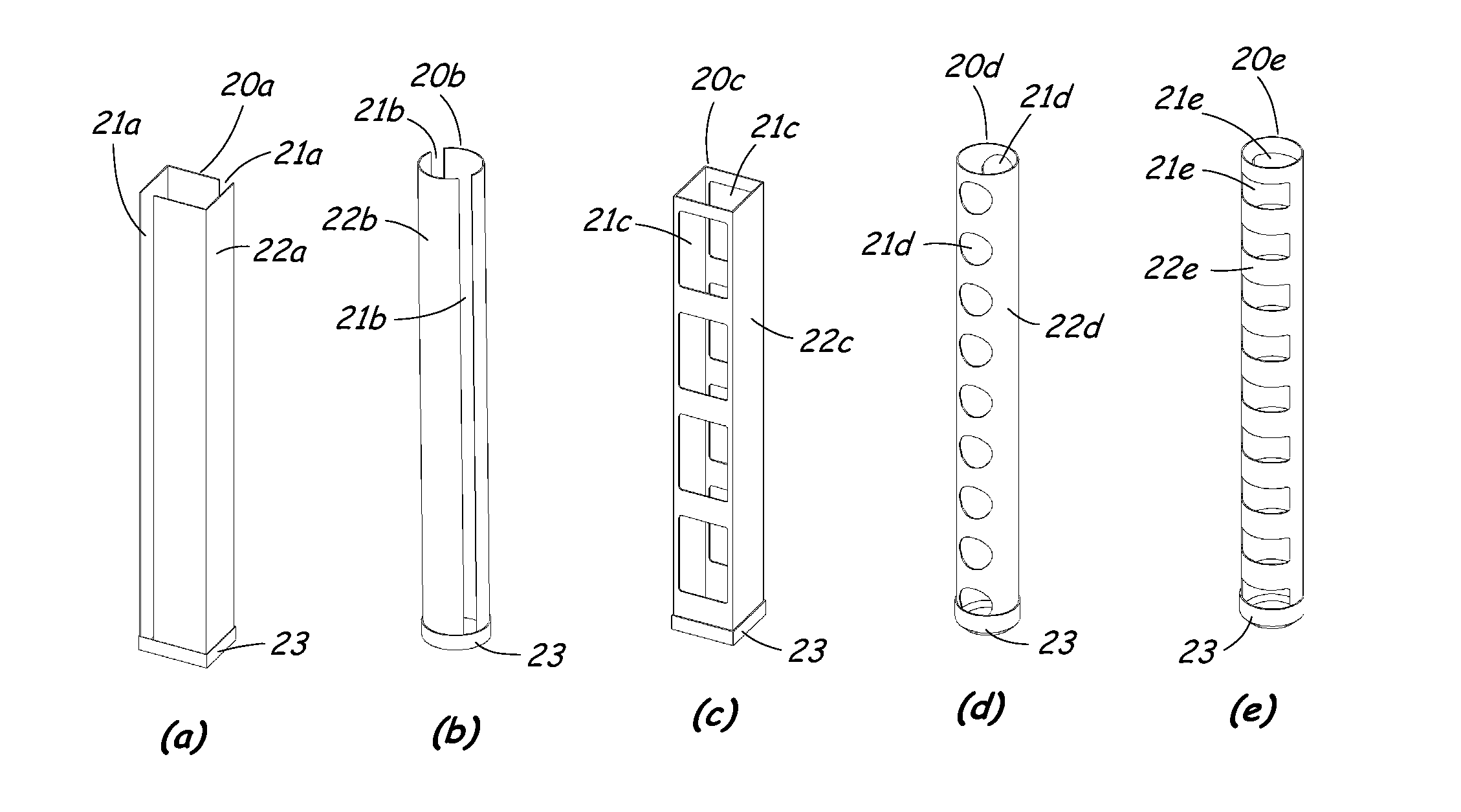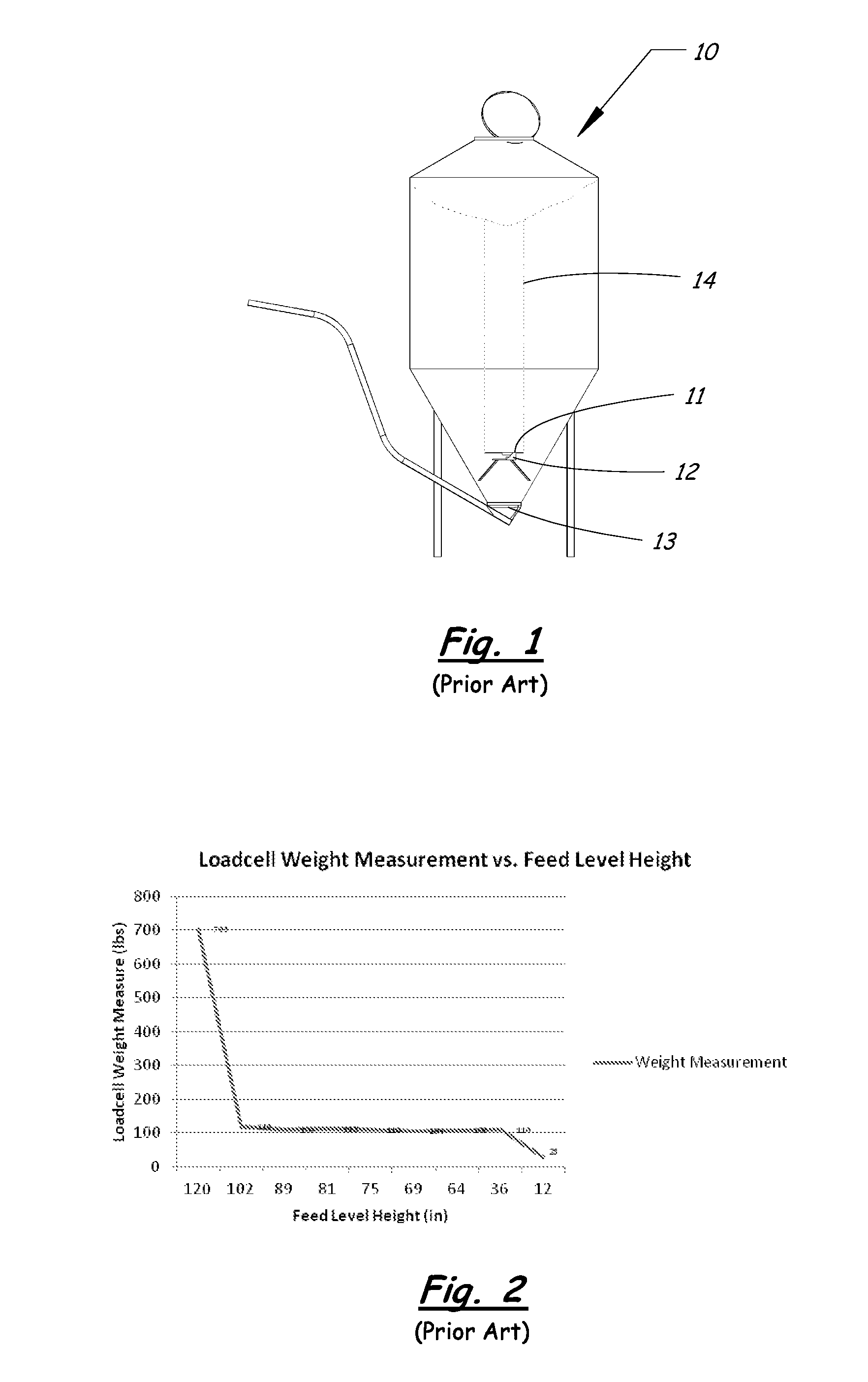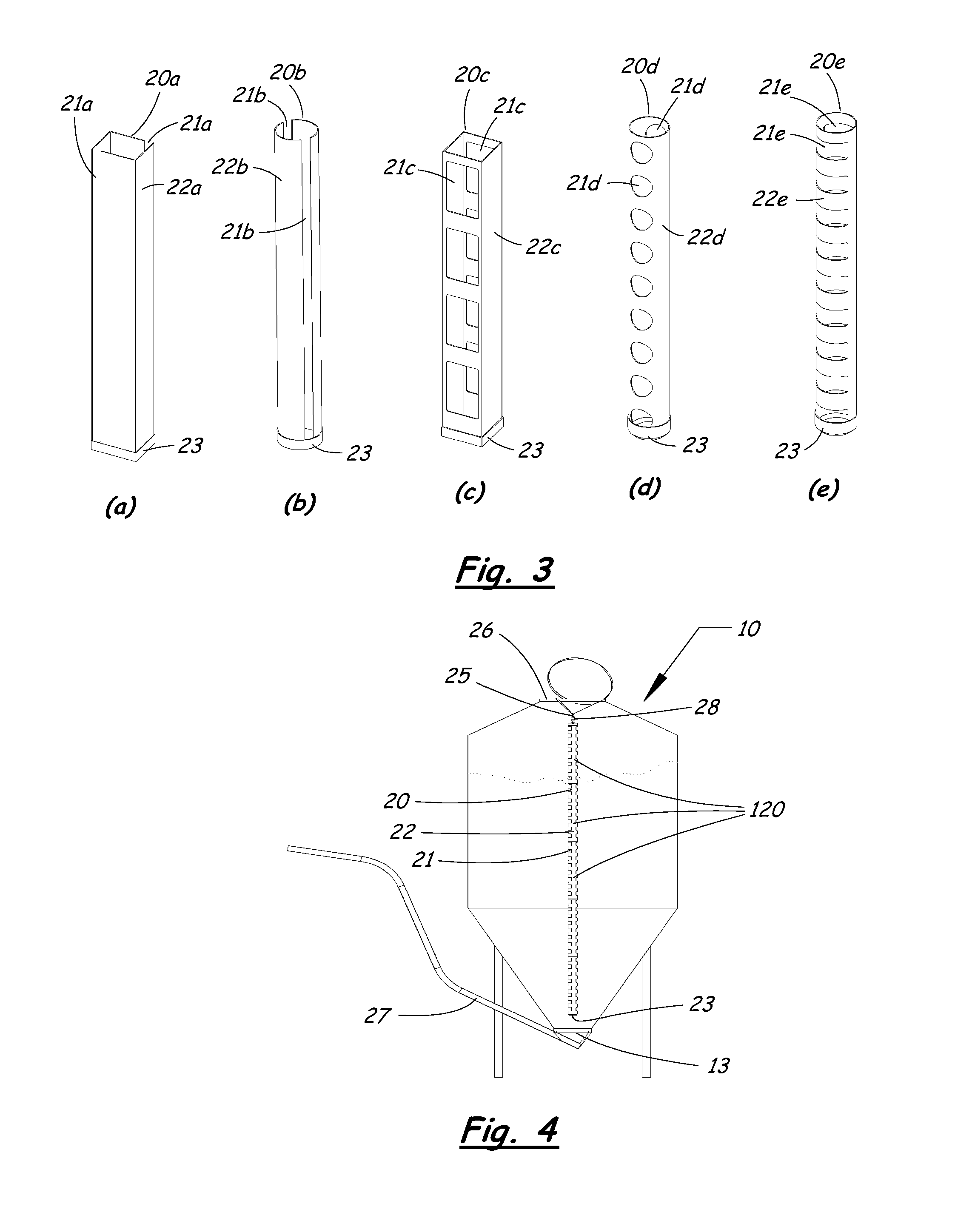System for measuring level of dry bulk material in container
a technology for dry bulk materials and containers, applied in the direction of level indicators with buoyant probes, instruments, machines/engines, etc., can solve the problems of discontinuous and periodic measurements, inherently complicated and expensive to employ for low-added value applications, and affect the accuracy of length measurements, etc., to achieve accurate measurement, long operating life, and low cost
- Summary
- Abstract
- Description
- Claims
- Application Information
AI Technical Summary
Benefits of technology
Problems solved by technology
Method used
Image
Examples
Embodiment Construction
[0031]A bin level monitoring system according to the present invention will now be described with reference to FIGS. 1 to 7 of the accompanying drawings.
[0032]The present invention provides a simple and low-cost method and device to measure and monitor the level of dry bulk solids in a bin, thereby solving the problems with the prior art systems described above.
[0033]The origin of the present invention is in understanding the inherent flow characteristics of dry bulk materials that are stored and removed from any type of dry bulk storage container 10, such as a silo, bin, or other storage structure (see FIG. 1). The internal flow characteristics of dry bulk materials can be determined by placing a flat circular plate 11 mounted on a load cell 12 at the bottom of the dry bulk storage container 10 near the outlet 13. Theoretically, the flat circular plate 11 should measure the weight of a cylindrical column 14 of dry bulk material lying directly on top of the plate 11. However, the ac...
PUM
 Login to View More
Login to View More Abstract
Description
Claims
Application Information
 Login to View More
Login to View More - R&D
- Intellectual Property
- Life Sciences
- Materials
- Tech Scout
- Unparalleled Data Quality
- Higher Quality Content
- 60% Fewer Hallucinations
Browse by: Latest US Patents, China's latest patents, Technical Efficacy Thesaurus, Application Domain, Technology Topic, Popular Technical Reports.
© 2025 PatSnap. All rights reserved.Legal|Privacy policy|Modern Slavery Act Transparency Statement|Sitemap|About US| Contact US: help@patsnap.com



